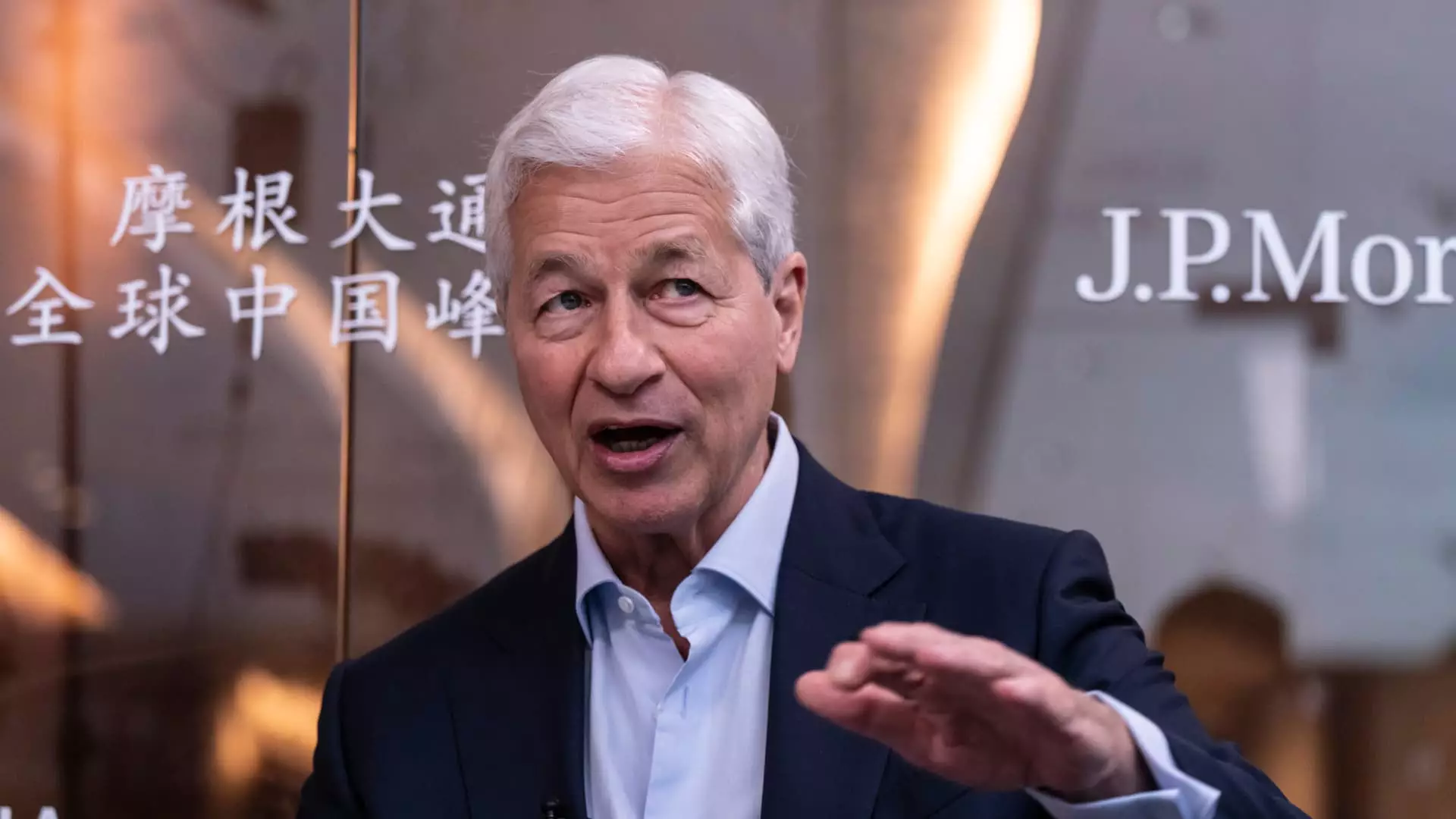Once considered a pedestrian player in the digital investing arena, JPMorgan Chase is embarking on a significant transformation that positions it as a formidable competitor against long-established online brokerages. The bank’s recent announcement to introduce innovative tools for bond and brokered CD trading signifies a pivotal shift in its approach to wealth management. In a financial landscape dominated by platforms like Charles Schwab and Fidelity, JPMorgan seems to acknowledge that merely existing in the digital space is insufficient; instead, it must lead the charge with a user-centric experience that marries simplicity with performance.
At the helm is Paul Vienick, appointed to revitalize the online investing domain after clear recognition from CEO Jamie Dimon that previous attempts were largely subpar. The shift in strategy reflects a broader understanding that to attract self-directed investors—those who thrive on digital autonomy—JPMorgan needs to rethink its offerings comprehensively. By focusing on usability, customization, and real-time access within its existing banking framework, JPMorgan is not just playing catch-up; it’s angling for leadership in a space where customer experience is paramount.
Redefining User Experience: The Power of Simplicity
JPMorgan’s new tools, which allow clients to easily research and purchase bonds alongside other asset classes through the same mobile app they use for day-to-day banking, are indicative of a vital trend in the financial industry: the democratization of investing. Traditional banking institutions often shied away from the harsh realities of tech-driven simplicity due to their cumbersome legacy systems. However, JPMorgan is challenging that narrative, asserting that investing can—and should—be as straightforward as accessing one’s bank balance.
The differentiation lies in what Vienick terms “the simplicity of fixed income,” fundamentally changing how investors perceive bond trading. The bank aims to displace the complexity typically associated with bond investments, appealing to a demographic that desires flexibility yet demands a seamless user experience. This move is not just wise; it is necessary. As the investing demographic skews younger, with millennials and Gen Z becoming more engaged in self-directed trading, a streamlined approach is essential to capture this burgeoning market.
Challenging Established Giants: A New Competitive Landscape
Despite these advancements, there’s no sugar-coating the hurdles JPMorgan faces. The bank, despite its colossal footprint and considerable assets, lags in the online brokerage sphere. While it has finally breached the $100 billion mark in assets under management, it remains dwarfed by its competitors, who have spent decades refining their platforms and customer engagement strategies. JPMorgan’s history of missteps, including the embarrassing public acknowledgment that its previous product offerings were inadequate, serves as a gritty reminder that progress requires both courage and humility.
This competitive landscape begs the question: can JPMorgan capture the self-directed investor segment effectively? The traditional emphasis on wealth management through human advisors has shifted; today, savvy investors crave digital tools that empower them to trade independently. JPMorgan’s inclination to invest in user-interface improvements reflects an understanding that the future of investing shouldn’t solely rely on financial advisors. If the bank capitalizes on its modernized approach, it stands to gain a lasting advantage—but the challenge is not merely technological; it’s also psychological.
Revolutionizing Customer Engagement: Targeting the Actively Involved
Another striking development in JPMorgan’s strategy is its focus on actively engaged investors. This demographic—those who conduct transactions frequently and prefer direct bond investments over mutual funds—represents a crucial market segment that large banks can no longer afford to ignore. By entrenching themselves with consumers who already utilize JPMorgan’s banking services, the bank aims to consolidate finances within its ecosystem.
Such a user-centric focus is crucial in an era where investors expect personalized experiences. Offering incentives like cash bonuses for moving funds to their platform is a tactical move, positioning JPMorgan as not merely a choice but a preferred one for self-directed investing. As Vienick stated, the integration of banking and investing services creates an avenue for instantaneous transactions and an overall cohesive financial management system. This effort illustrates the bank’s ambitions to not only capture new users but to deepen relationships with existing customers.
Ambition Meets Reality: A Trillion-Dollar Vision
JPMorgan has laid out ambitious plans under Vienick’s stewardship, contemplating a self-directed investing business that could potentially rival those of industry titans. The assertion that this could become a trillion-dollar market speaks to a level of confidence in the bank’s capacity to transform itself. Yet, such ambitions are contingent upon sustained efforts and continued innovation.
The road ahead is fraught with challenges, but JPMorgan’s existing infrastructure, history, and brand reputation provide a solid foundation from which to build. In a marketplace where the competition is fierce and the pace unrelenting, the ability to adapt and thrive may define the success of banks like JPMorgan in their quest for online investing supremacy. Consequently, the future of investing remains at a pivotal juncture, influenced by both established giants and emerging disruptors alike.


Leave a Reply